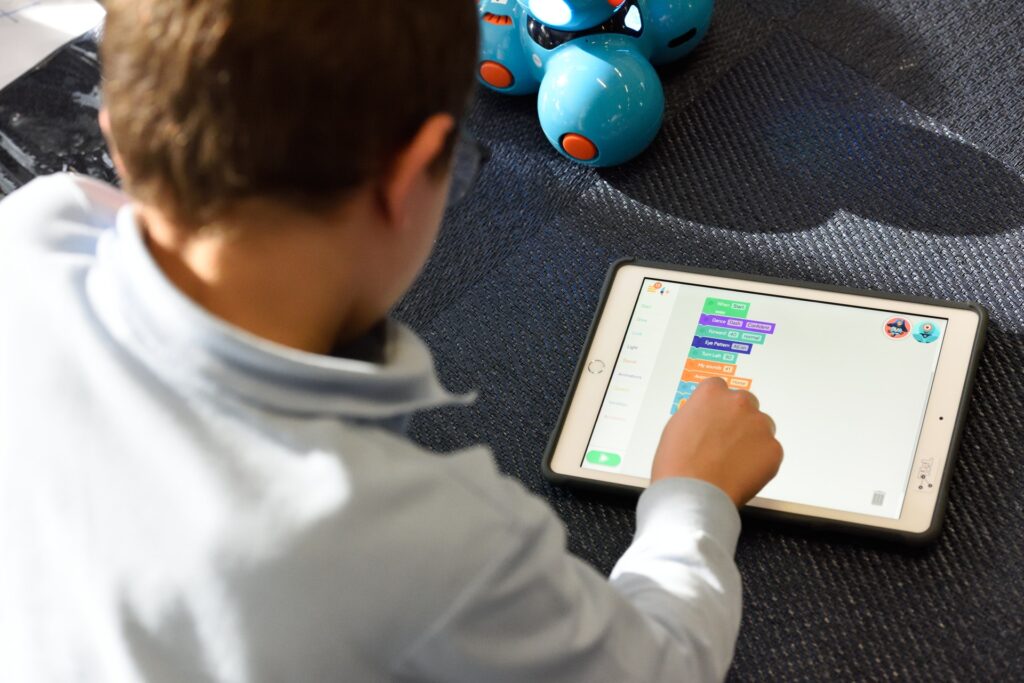
The entire world is in a state of conflict due to the current COVID-19 pandemic. This uncertainty and speculation around COVID-19 have led academic/educational institutions to take learning to the digital domain. Both educators and students are concerned about the transition to virtual classrooms. The digital domain is a completely new environment and it will take time for people to adjust to it. Moreover, the online learning process becomes less effective as compared to learning in a physical classroom. But by adopting certain strategies, students can continue learning without a break. Some of these strategies are:
Technical support

To get started with online learning, you should have the required technology to participate in virtual learning. You would be needing a smart device that can be connected to the internet and help you in completing tasks necessary for online learning. Get in touch with Etutorworld for online learning services to understand the course’s technical requirements. Then ensure that you have full access to the resources the course needs. By doing so, you would be able to overcome the barriers at home to complete the curriculum, and your learning process won’t get hindered.
Follow a schedule
Leading a disciplined life helps you in maintaining a strict learning schedule. Online learning services provide a lot of flexibility, but it doesn’t mean that we become undisciplined. Sleeping late, waking up late, ignoring the assignment deadlines, etc. will throw you into a vicious cycle of laziness. So, to ensure that you don’t lag in the online course, follow a weekly and daily study schedule. Designate study hours, set project deadlines, and allocate some time for self-study. Adhere to these diligently so that the online class’s flexibility doesn’t turn fatal for your learning.
Stay away from social media

Social media is the biggest distraction that you can get addicted to during the lockdown. Various App notifications popping on your smart device will divert your attention to something insignificant. Browsing through social media platforms like Facebook, Instagram, Twitter, etc. is an addiction, and you won’t even realize the amount of time you have wasted on them. Binge-watching movies or a tv-series is another big distraction that will derail you from your studies. Thus, mute or turn off notifications on your smart device to reduce distraction during studies. If possible, keep your smart device away during your study hours so that you can focus on the concepts.
Set up your study space
To complete the online course, you have enrolled in, you will have to focus and spend hours studying. Thus, you must create a well-defined and organized space to attend the classes and study. Ensure that the study place is far away from distractions like your bed, entertainment devices, etc. Equip this study place with the study materials and other essentials for completing the course. Even though the class is online, attend it from your study space rather than lying on the bed or sitting in the living space.
Storytelling

Storytelling is the most effective teaching tool in a virtual setup. Stories allow the students to connect with the content or concept in an explicit manner. The student engagement increases as they get engrossed in hearing stories. Intentionally add stories to your teaching content and share them with students in the class. Explain the concepts to students through real-life stories and experiences to grasp their attention. Students will have a great learning experience, once the storytelling technique is implemented.
Assist Struggling Students
Every student has a different learning rate. Some students are fast learners, while others might struggle. But by understanding a student’s communication and interaction quotient in the class, you can recognize them. Talk to these students in a one-on-one session to clear their doubts as they might need more engagement. Keep a periodic check on their progress and ensure that they have what they need. Your aim should be to help students by becoming their mentor.
Screen-Only Learning

Most of the students would be undertaking screen-only learning for the first time. Being away from a face-to-face connection with educators and fellow students, they might feel lonely and isolated. To keep the connection active in an online session setup separate discussion hours. This could be done through email, chat, or video calling. Have candid discussions with students so that they can build a community where students can express themselves. You can also maintain a one-on-one connection with students to address their queries and doubts. In short, ensure that students are comfortable in your online classes.
Good Audio and visuals
If you are a teacher taking an online class, ensure that your students can clearly see or hear you. Don’t let poor lighting spoil the learning enthusiasm. Place a lighting course in front of your face while taking the class. If possible, sit facing a window in the day class and let the Sun do the work for you. The students will feed off on your energy and poor lighting can reduce the engagement.
Poor audio can disengage students from the online session as they won’t be able to hear anything. You should use headphones with a microphone to reduce outside noise. Try taking a class from the quietest space in your home and turn all the audible notifications off on your computer or smart device.
Use Technology

Technology will help you with effective and engaging teaching and learning. Tools like discussion boards, blogs, YouTube videos, wikis, etc. help explain the concepts to students effectively. Since you would be teaching in a virtual setup, using these tools shouldn’t be a problem. Student’s learning experience and engagement will improve once you start using digital tools in teaching concepts. Since online learning is new for students as well, give them the free hand to use these tools in completing their assignments and projects. The more comfortable they feel, the easier it will become for them to adapt to virtual learning.
Despite the trying times that we all are in, stay positive, and encourage your students or children to move to digital learning. Support them at every instant so that students can learn the subjects and develop virtual skills.











